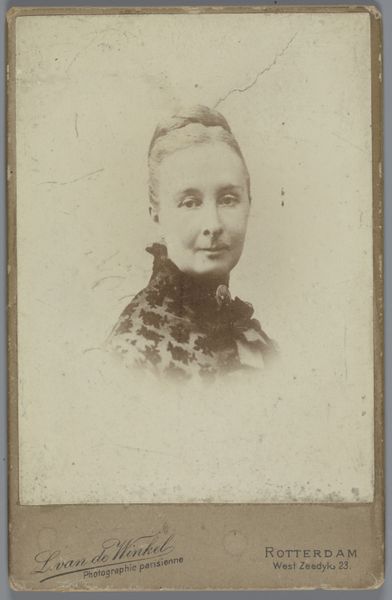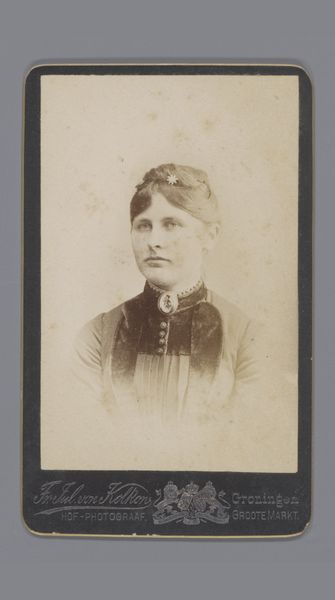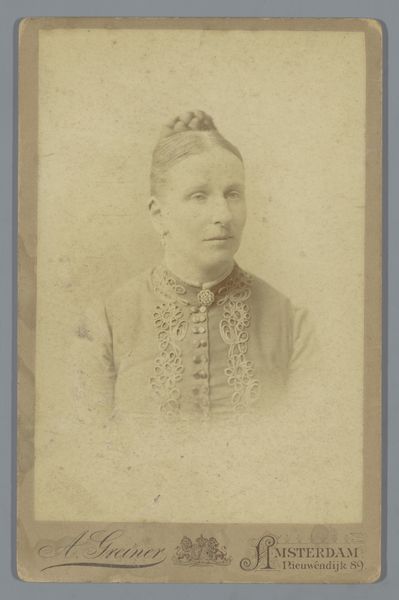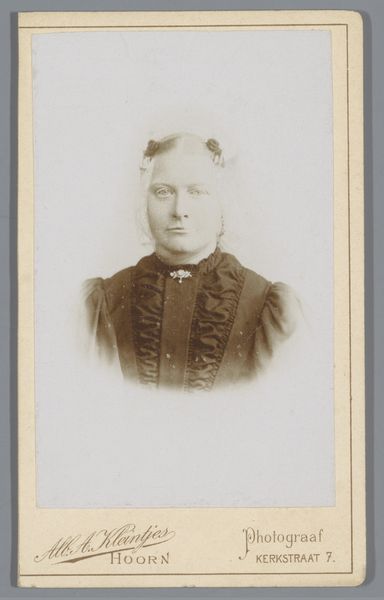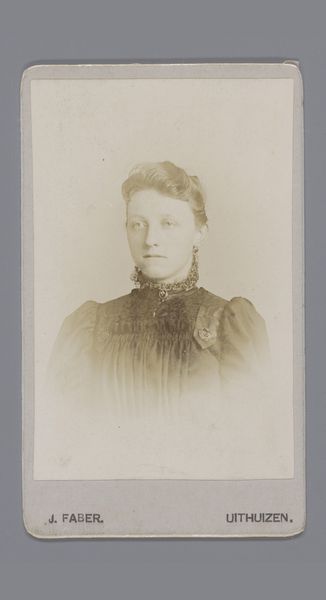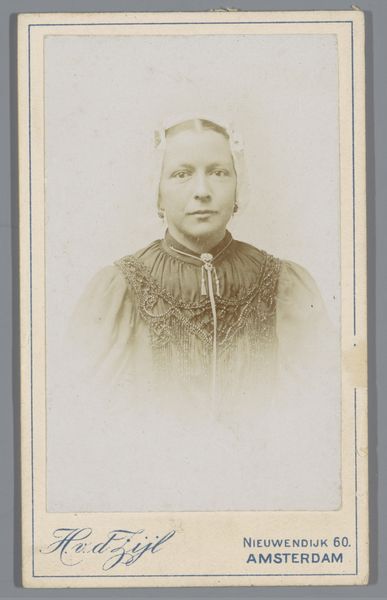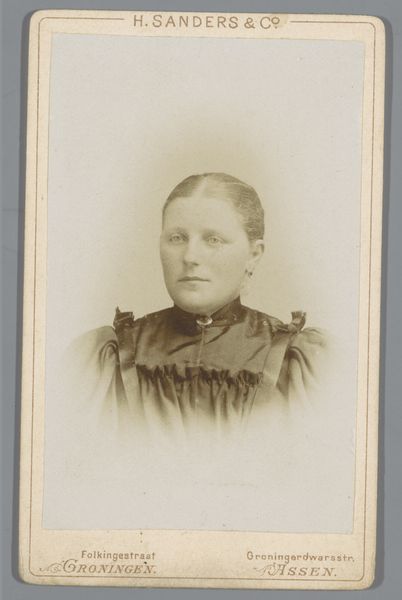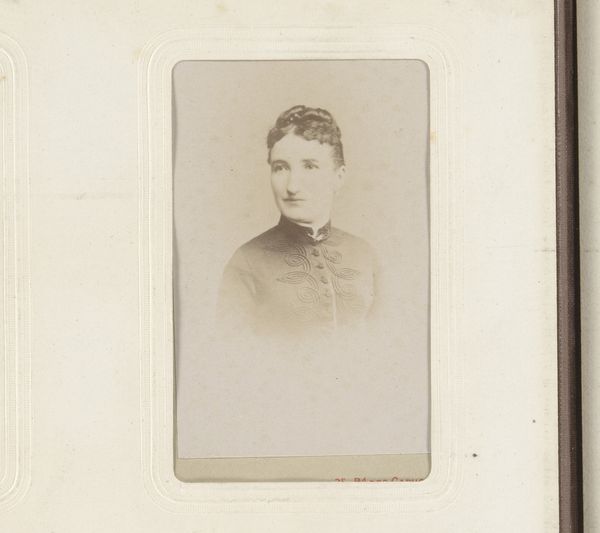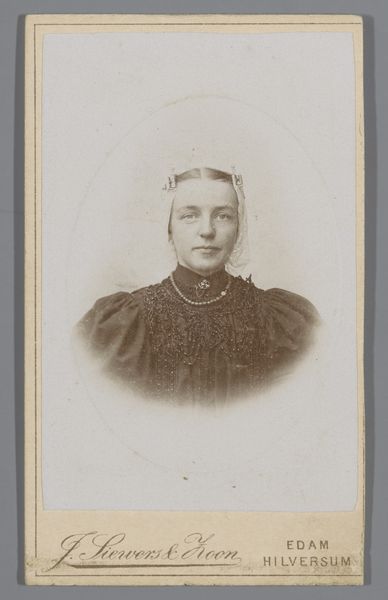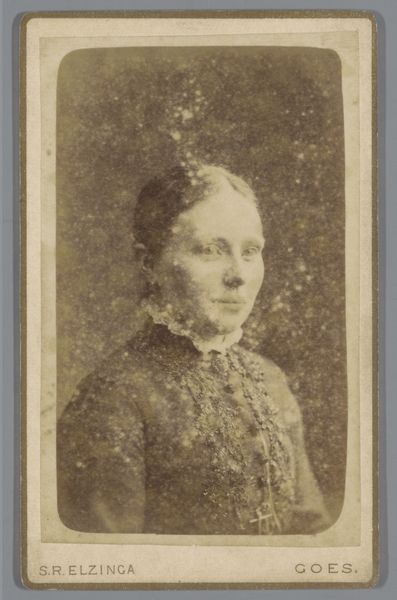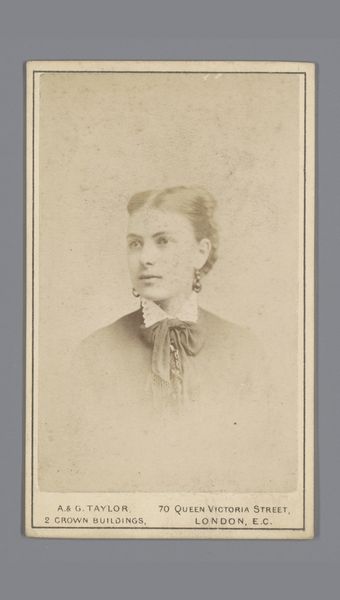
Dimensions: height 139 mm, width 98 mm
Copyright: Rijks Museum: Open Domain
Curator: This photographic portrait, "Portret van een vrouw," dates from between 1860 and 1900, and its author is noted as E. Visser von Weeren. It presents a seated woman with a calm expression. What's your first reaction? Editor: Hauntingly beautiful, actually. There's a softness, an almost ethereal quality to her. And something in her gaze... it's melancholic, knowing, maybe a little challenging? Curator: Interesting. I see this piece situated within broader narratives of representation and gender during this period. Photography became a way to capture and codify identities, particularly of women, within specific societal roles and expectations. Editor: I get that, totally. But look at her clothes! The lace, the high collar, those tiny roses tucked into her lace cap, even the button placement feels very intentional. Every single thing about this photograph suggests that this person wants to make sure the image is presenting how she wants to be perceived. Curator: That's a key point. This image blends both realism and romanticism, both capturing a true likeness, but within the carefully constructed visual language of the era. Think of how the rise of industrial photography made portraiture accessible to the middle class; how did this impact concepts of the ideal woman? Editor: Absolutely. What's powerful to me is thinking about the power dynamic. Was she complicit? Subverting the gaze? Long before iPhones, folks controlled the very few photographic documents created about themselves, but as you stated, there's societal expectations placed on her regardless. Curator: Exactly. The seemingly passive "subject" always engages, and negotiates their image, within the constraints, or the opportunities, of that specific socio-historical frame. What can a study of fashion, or gender roles, or the developing art market of the late 19th Century, teach us about how we interpret this piece today? Editor: Maybe this: even the 'realistic' representations were curated, carefully assembled performances for posterity. To our 21st-century eyes, it’s easy to forget. She stares back with the silent insistence of history. Curator: That resonates deeply for me. The layers of performance and presentation, and the enduring mystery of her gaze. Food for thought, indeed.
Comments
No comments
Be the first to comment and join the conversation on the ultimate creative platform.
